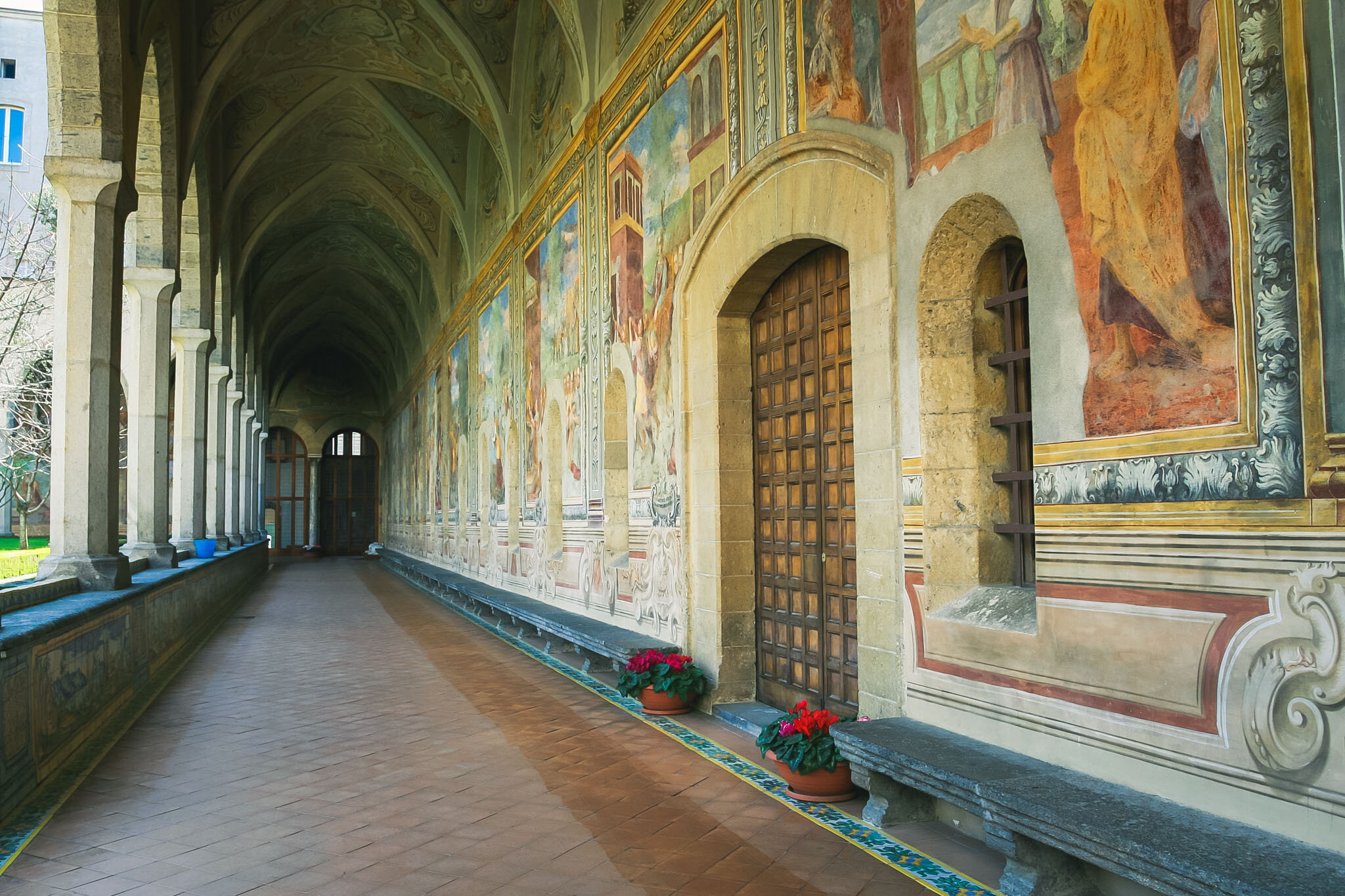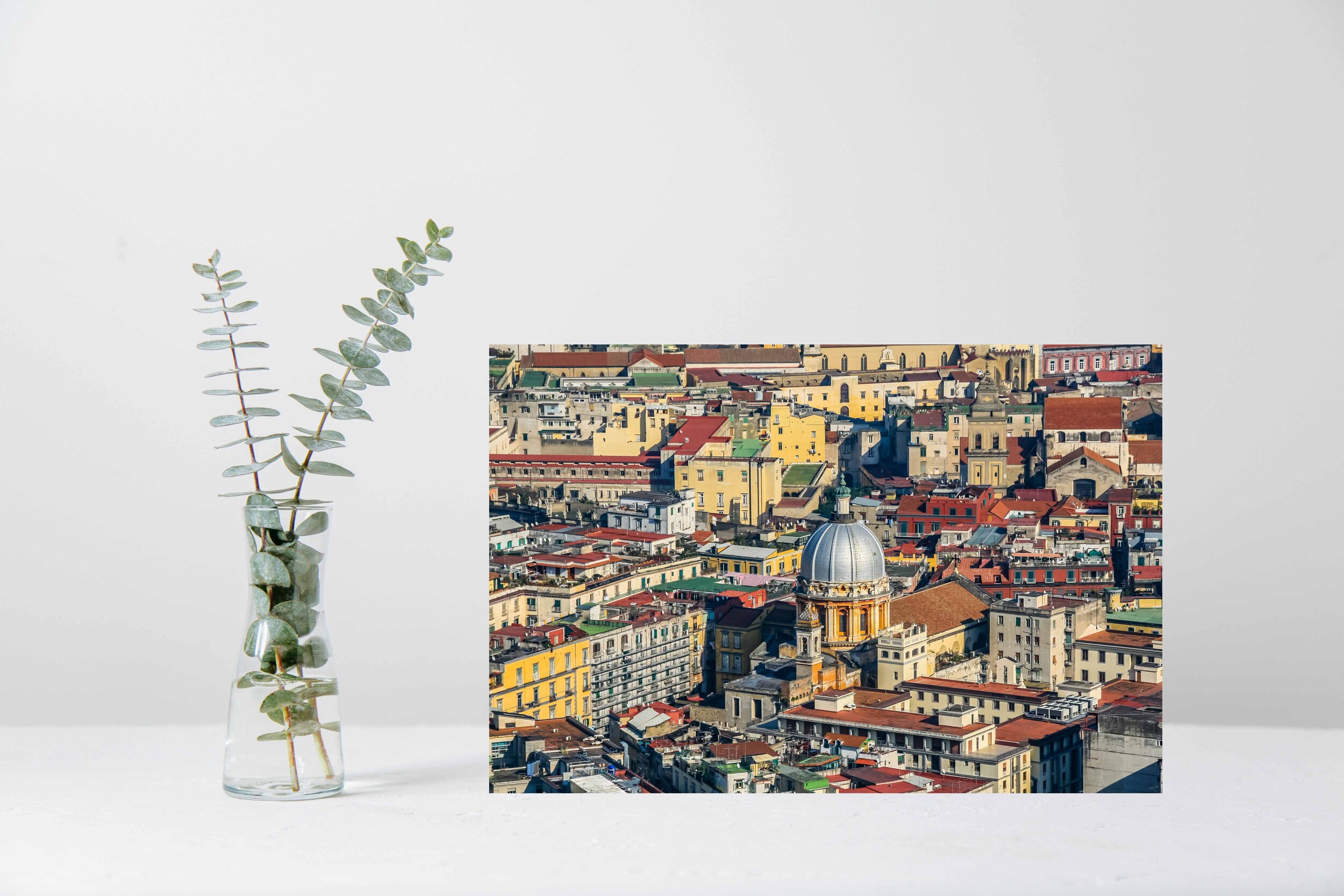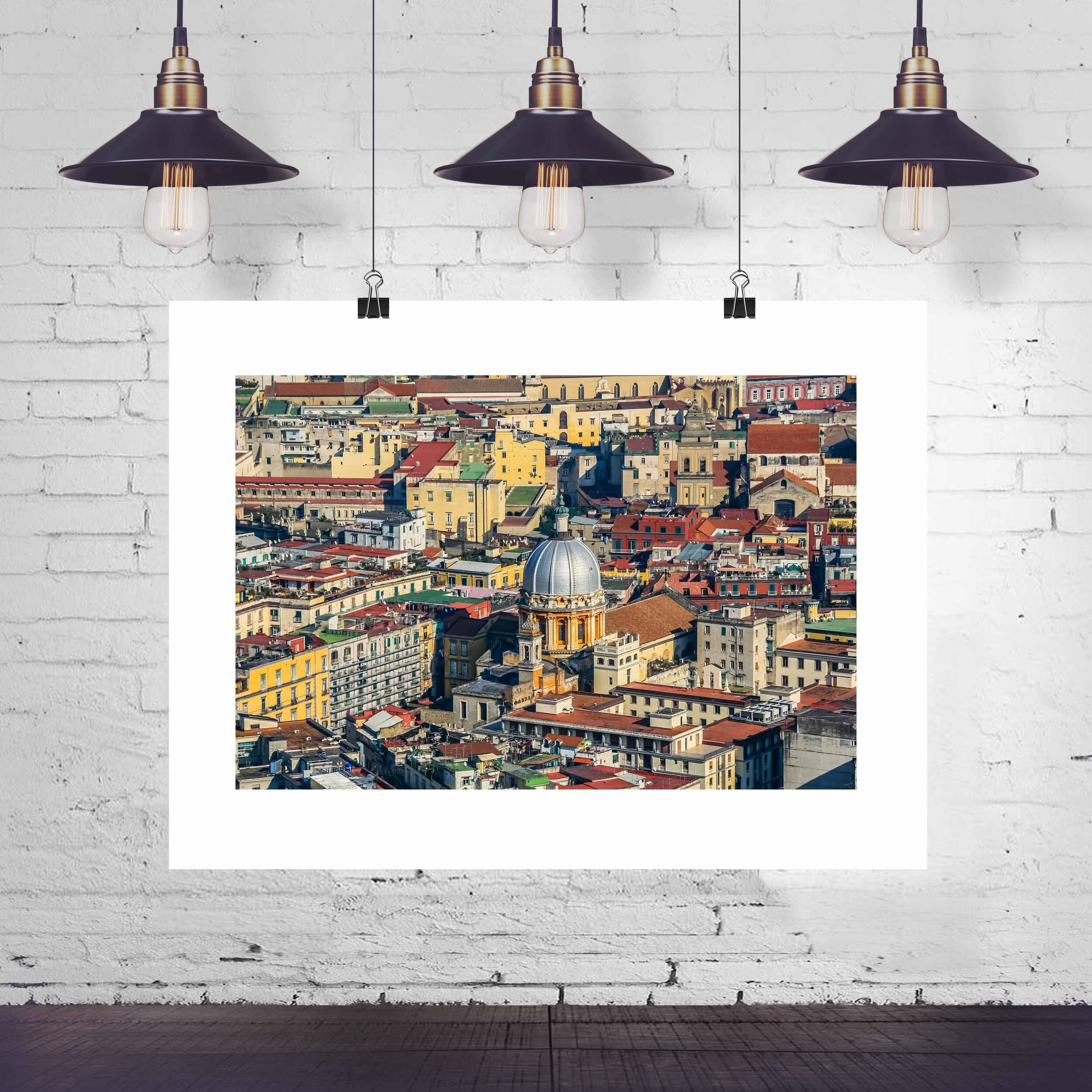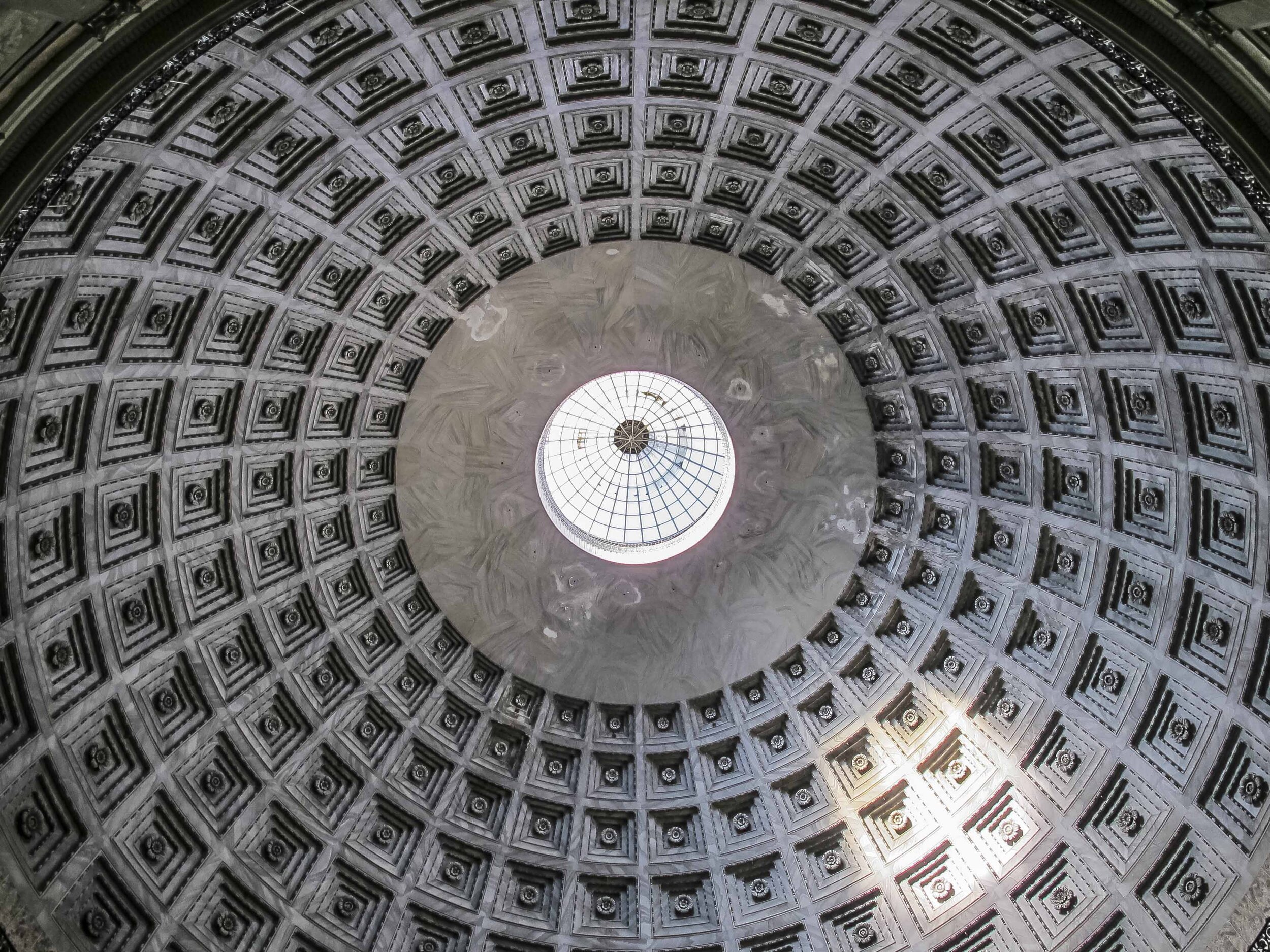Naples Santa Chiara Church – A Story of Salvation and Sacrifice
It was the most devastating 24 hours of the war. American and British air raids pounded the city all day and all night. The targets: the port, train station and military installations. Lasting 30 minutes, 40 minutes, an hour, an hour and a half, the raids were relentless. And when it was over, thousands would be left dead or wounded and much of the city’s infrastructure would be destroyed. From the waterfront to Piazza Carlo III, one building after the next lay in ruins. Homes, hospitals, schools, even Naples’ Albergo dei Poveri (shelter for the poor), were shattered. And what of its churches? They didn’t escape the carnage either. Among the casualties, one of Naples’ most important treasures, the Royal Church of the Angevins, Naples Santa Chiara Church.
She soars high above the busy Piazza del Gesù, the bustling piazza that leads into the historic district – Centro Storico, bearing no trace of the fate that once befell her. Her yellow tuff stone and adjacent bell tower, iconic landmarks clearly visible from the city’s hill districts. A 14th century Gothic church enclosed in a citadel like complex that is home to a double monastery, a majolica tiled cloister and a museum and archaeological area, she reminds us of Naples’ sometimes tragic past, and is emblematic of her hopes for the future.
Stepping into the church is like visiting an old friend. The simplicity and serenity of her Gothic style never disappoints. Yet had it not been for that fateful night, we’d probably be looking at a completely different church now. Something more akin to Naples Cathedral I imagine, a Baroque fusion with six or seven centuries of changes layered one on top of the next. For Santa Chiara, like so many other churches in Naples, was completely restyled during the wave of Baroque that swept the city in the 18th century, the triumph of the Neapolitan painter, sculptor and architect, Domenico Antonio Vaccaro.
But the WWII bombings of August 4, 1943 nearly completely destroyed the church and wiped out most of Vaccaro’s work, leaving little more than a bare shell behind. Just ten short years later, however, on the tenth anniversary of that fateful day, Naples Santa Chiara Church reopened its doors with a controversial restoration. The new Santa Chiara was once again the old Santa Chiara, restored back to its previous Gothic style.
The original Santa Chiara was a masterpiece of the Angevin Monarchy, the French Dynasty who ruled the city from 1266 until 1442 and who left behind so many of Naples most important buildings and churches, including the Cathedral, Il Duomo. It was the Dynasty’s third ruler, the revered Robert the Wise who with his wife Queen Sancha Majorca (Sancia di Maiorca) commissioned Italian architect and sculptor Gagliardo Primario in 1310 to build Naples Santa Chiara Church as their Royal Chapel and burial place. As devoted patrons of the Franciscans, they also included provisions for the unusual arrangement of a double convent to house both nuns and monks of the Order. Around the time it was completed in 1328, King Robert invited the renowned Florentine painter and architect Giotto to carry out a series of frescoes inside the church. Unfortunately, but for a few fragments, those works have been completely lost to history.
But the centerpiece of the church survived. Not the apse as one might expect, and in fact the church doesn’t have an apse. Rather, at the end of the nave with its ten chapels on each side, King Robert’s tomb stands proudly and reverently behind the altar. The work of the Florentine brothers, Pacio and Giovanni Bertini, it is an enduring reminder of Robert’s torment.
The King himself assumed the frock of a Franciscan monk before his death, craving for a peace which he did not find upon his throne, and lies recumbent therefore, attired humbly in his habit, while on a higher story of the monument he sits enthroned in all his earthly splendour, gazing down upon his church with those keen features which were characteristic of his house, the thin hooked nose, not unlike a vulture’s beak, so strangely like that which one sees on the coins of his grandfather, murderer of Conradin. Uneasy were the lives of all the monarchs of that house…
- Arthur H. Norway, Naples Past and Present
Not far from Robert’s tomb are those of his son Charles, Duke of Calabria and Charles’ second wife Marie Valois. Important artifacts of Neapolitan medieval art, they were the works of Tino da Camaino from Siena. But perhaps the most important tomb in Naples Santa Chiara Church comes not from the Angevin Monarchy, not from the Baroque, but aptly enough from the WWII era. Sitting quietly in the back of the church in the first chapel on the left is the tomb one of Naples’ local heroes and an Italian national hero, Salvo D’Acquisto. A member of the Italian Carabinieri, D’Acquisto stood up during a German interrogation as the sole perpetrator of a crime he didn’t commit, saving 22 innocent people, mostly farmers, who were sure to be put to death. A young man of twenty-three from the Vomero district, he was executed by the Germans in September 1943.
Since it reopened in 1953, Santa Chiara has honored Salvo D’Acquisto’s sacrifices and it is an ever present reminder of that horrific day of August 4, 1943. Recalling both the best and the worst of mankind, Santa Chiara stands today as a symbol of strength and resolve, and is a testament to Naples’ enduring spirit.
Naples Santa Chiara Church – A Story of Salvation and Sacrifice was first published on NapoliUnplugged.com on February 24, 2010.
images From Napoli
Learn More
She Studios is a participant in the Amazon Associates Program, among other affiliate programs, an affiliate advertising program designed to provide a means for sites to earn advertising fees by advertising and linking to Amazon.com and other websites. As an Amazon Associate She earns from qualifying purchases.
















